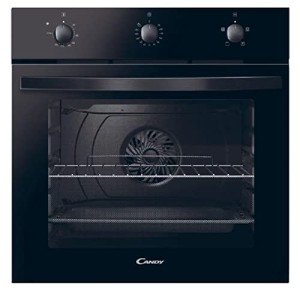
The cooking world has actually evolved substantially throughout the years, with home appliances ending up being more advanced and efficient. One such development is the single fan oven, a kitchen staple for many home cooks and professional chefs alike. This post delves into the complexities of single fan ovens, their benefits, and practical suggestions for use.

A single fan oven, also referred to as a convection oven, is created to cook food evenly using a fan and an internal exhaust system. Unlike conventional space-saving Ovens that rely mostly on convected heat, single fan ovens flow hot air around the food, ensuring a constant temperature throughout the cooking process. This feature boosts cooking performance and decreases cooking times compared to basic ovens.
The mechanics of a single fan oven are uncomplicated however innovative. The oven consists of a number of essential parts:
When the oven is switched on, the heating elements warm up, and the fan begins to circulate the heat evenly. This makes sure that all sides of the food are exposed to hot air, leading to better cooking results-- especially for baked items.
Single fan ovens boast numerous benefits, making them popular among culinary enthusiasts. The main advantages include:
To much better understand the distinct qualities of a single fan oven, it's advantageous to compare it to a standard oven. The table below sums up key differences:
| Feature | Single Fan Oven | Conventional Oven |
|---|---|---|
| Cooking Method | Convection (distributing air) | Radiant heat |
| Cooking Time | Much shorter | Longer |
| Temperature level Consistency | More consistent | Can have hot/cold spots |
| Energy Consumption | Typically lower | Higher |
| Perfect for Baking | Much better browning and rising | Great for roasting |
For ideal results with a single fan oven, consider these useful suggestions:
Adjust Temperature and Cooking Time:
Usage Shallow Baking Pans:
Avoid Crowding the Oven:
Turn Baking Sheets:
Keep the Oven Door Closed:
Can I use routine recipes in a single fan oven?
Are single fan ovens more pricey than conventional ovens?
Can I bake multiple items at the same time?
Do single fan ovens feature extra functions?
Is upkeep various for single fan ovens?
The single fan oven stands out as a superior option for those seeking to enhance their cooking skills and performance in the kitchen. Its capability to cook food uniformly and faster can change the cooking experience, making even the most intricate dishes easy to carry out. By understanding how to utilize a single fan oven successfully and leveraging its benefits, home cooks and professional chefs can delight in a more enjoyable and efficient cooking journey.
No Data Found!

